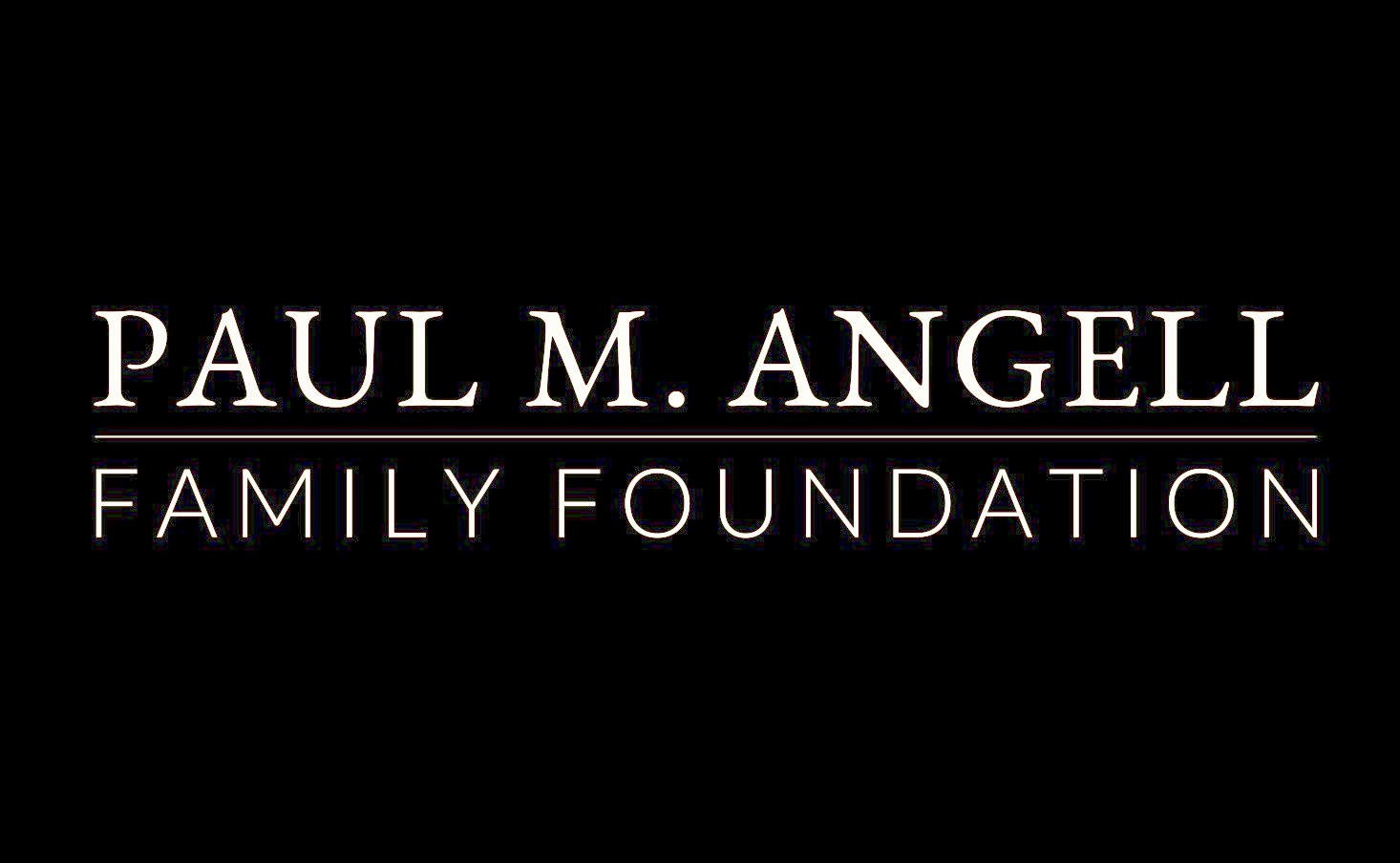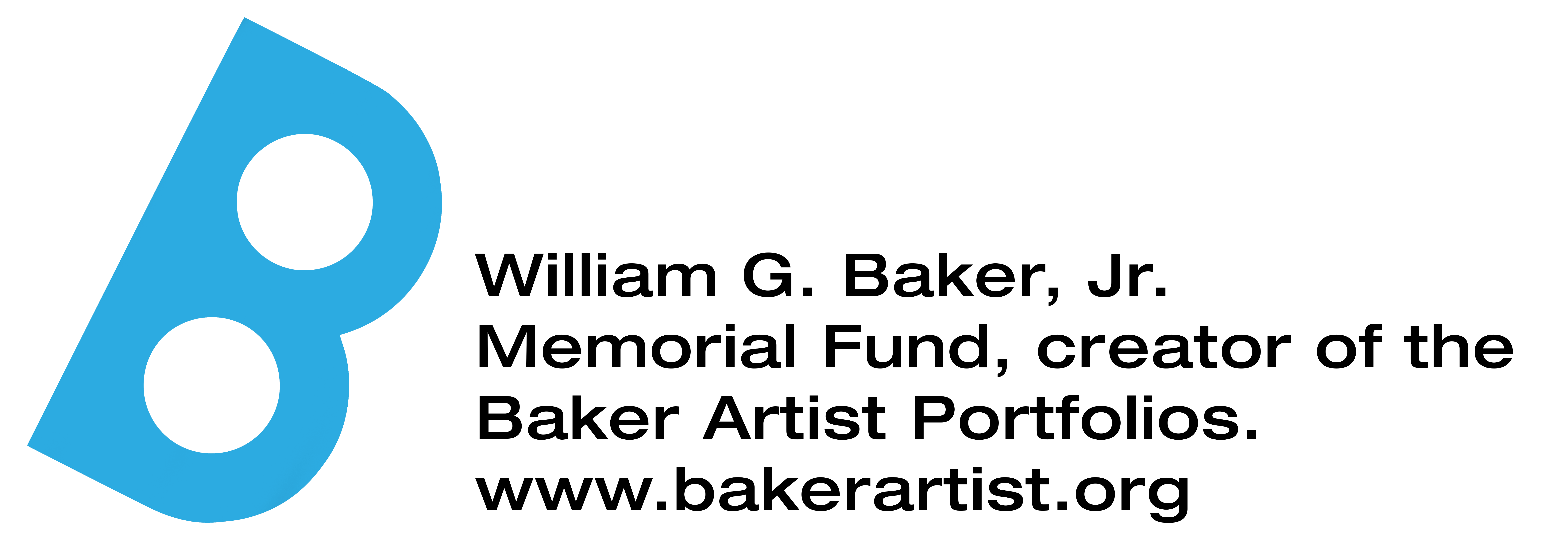Gil Shaham, violin
Orli Shaham, piano
Location: Shriver Hall
SHCS’s 60th anniversary season opens with Grammy-winning Gil Shaham, “among the most inspired violinists of his generation” (The Guardian), and “brilliant pianist” (The New York Times) Orli Shaham. The siblings and star soloists join forces for a rare and illuminating duo-recital. Together, they perform works by Clara and Robert Schumann, and their close friends Johannes Brahms and Amanda Maier.
Gil Shaham is "a virtuoso and a player of deeply intense sincerity." —The New York Times
"Stylish intelligence and pianistic refinement distinguishes Orli Shaham." —Gramophone
What You'll Hear
About the sponsor
Florence Clarke Gann (1909-1995) was known as “Mity” because she was as small as a “mite.” The moniker never fit. She had irrepressible energy and an extraordinary love for life. She had a quest for knowledge and enjoyed lively intellectual debate. She loved music, art, good books, and, at age 85, she was still working on her tennis game. Mity’s love for music and her piano were important aspects of her life. She played chamber music and was still playing a few weeks before her death. She used to say, “Music is one of the things that always makes me feel good.” Mity’s legacy is surely one of love for life and for all the beautiful and interesting things in it. She is remembered by this gift of a concert in her memory made in 1996 by her family and friends.
Drs. Reiko T. and Yuan C. ("Ed") Lee, faculty in The Johns Hopkins University Department of Biology endowed this annual concert in 2005. Biochemists and amateur string players, the Lees have been subscribers since SHCS's first season. The Lee Fund supports concerts by the world's greatest string players. The first concert supported by this gift was the 2005-06 appearance by Pinchas Zukerman and was dedicated to Reiko's father, Tomotake Takasaka, Professor of Agricultural Engineering at National Taiwan University and an avid self-taught amateur string player. He was also one of the first musicians to bring Western music to Taiwan. He held weekly gatherings of chamber music lovers at his home and it was at one of these that Reiko and Ed, who played viola, met. They came to the U.S. in 1958, earning their Ph.D.s in biochemistry at the University of Iowa. After three years at U.C. Berkeley, they arrived in Baltimore in 1965 to start their Hopkins-and Shriver Hall Concert Series-careers.

Gil Shaham
Gil Shaham is one of the foremost violinists of our time; his flawless technique combined with his inimitable warmth and generosity of spirit has solidified his renown as an American master. He is sought after throughout the world for concerto appearances with leading orchestras and conductors, and regularly gives recitals and appears with ensembles on the world’s great concert stages and at the most prestigious festivals.
Highlights of recent years include a recording and performances of J.S. Bach’s complete sonatas and partitas for solo violin and recitals with his long-time duo partner, pianist Akira Eguchi. He regularly appears with the Boston, Chicago, and San Francisco symphonies, the Berlin, Israel, Los Angeles, and New York philharmonics, Orchestre de Paris, and in multi-year residencies with the orchestras of Montreal, Stuttgart, and Singapore.
Shaham has more than two dozen concerto and solo CDs to his name, earning multiple Grammys, a Grand Prix du Disque, Diapason d’Or, and Gramophone Editor’s Choice. Many of these recordings appear on Canary Classics, the label he founded in 2004. His 2016 recording “1930s Violin Concertos Vol. 2” as well as his 2021 recording of Beethoven and Brahms Concertos with The Knights were nominated for Grammy Awards.
Shaham was born in Champaign-Urbana, Illinois, in 1971. He moved with his parents to Israel, where he began violin studies with Samuel Bernstein of the Rubin Academy of Music at the age of 7, receiving annual scholarships from the America-Israel Cultural Foundation. In 1981, he made debuts with the Jerusalem Symphony and the Israel Philharmonic, and the following year, took the first prize in Israel’s Claremont Competition. He then became a scholarship student at The Juilliard School and also studied at Columbia University.
Gil Shaham was awarded an Avery Fisher Career Grant in 1990, and in 2008 he received the coveted Avery Fisher Prize. In 2012, he was named “Instrumentalist of the Year” by Musical America. He plays the 1699 “Countess Polignac” Stradivarius and performs on an Antonio Stradivari violin, Cremona c1719, with the assistance of Rare Violins In Consortium, Artists and Benefactors Collaborative. He lives in New York City with his wife, violinist Adele Anthony, and their three children.
Gil Shaham’s website is gilshaham.com.
“His virtuosity is breathtaking . . . .”—The Telegraph

Orli Shaham
A consummate musician recognized for her grace, subtlety, and brilliance, the pianist Orli Shaham is hailed by critics on four continents. The New York Times called her a "brilliant pianist," The Chicago Tribune referred to her as “a first-rate Mozartean,” and London’s The Guardian said Shaham’s playing at the BBC Proms was “perfection."
Orli Shaham has performed with many of the major orchestras around the world, and has appeared in recital internationally from Carnegie Hall to the Sydney Opera House. She is the artistic director of Pacific Symphony’s chamber series Café Ludwig in California since 2007 and was artist-in-residence at Vancouver Symphony (USA) in 2022-24.
Highlights of Shaham’s 2025-26 concert season include Beethoven’s Emperor Concerto at the Classical Tahoe Festival, performances of Light Forming by David Robertson with the St. Louis and Nashville symphonies, and the premiere of a concerto for violin and piano by Reena Esmail which she commissioned with her brother, the violinist Gil Shaham, with the National and Virginia symphonies.
In 2026, Orli Shaham releases an album of American chamber music with members of the Pacific Symphony, including works by Margaret Brouwer, Avner Dorman, Reena Esmail, and Viet Cuong. Her 2024 box set of the complete sonatas by Mozart received accolades worldwide. Shaham’s discography also includes her acclaimed solo album, “Brahms Inspired," “John Adams: Absolute Jest & Grand Pianola Music” with the pianist Marc-André Hamelin and the San Francisco Symphony, with the composer conducting; and “American Grace," featuring Steven Mackey’s Stumble to Grace, written for her, with the Los Angeles Philharmonic.
Orli Shaham is on the piano and chamber music faculty at The Juilliard School and is chair of the Board of Trustees of Kaufman Music Center. She is a major presence on public radio as co-host and creative for NPR’s From the Top and was host of Dial-a-Musician, a radio feature series she created. She is regularly featured on the popular music education platform Tonebase, including masterclasses on Mozart’s piano sonatas and a lecture-performance about Clara Schumann.
Orli Shaham’s website is orlishaham.com.
"She [combines] a crisp keyboard touch with an uncommonly nuanced approach to tone and phrase." —Chicago Tribune
Amanda Maier (1853-1894)
Violin Sonata in B minor
View NotesMaier was scarcely an unknown when she performed her newly minted Violin Concerto with the Leipzig Gewandhaus Orchestra in 1876. The 22-year-old composer-violinist had been concertizing throughout her native Sweden for several years to mounting acclaim, and her high-profile appearance in Leipzig catapulted her into the select company of internationally prominent women musicians. After her marriage to Dutch composer Julius Röntgen in 1880, the newlyweds took up residence in Amsterdam, where Maier curtailed her performing career and launched a fashionable musical salon that attracted such visiting luminaries as Clara Schumann, Johannes Brahms, and Edvard Grieg. When Brahms, who was introduced to Maier by the pianist Elisabeth von Herzogenberg, sent the unpublished score of his D-minor Violin Sonata, the two women read it through with what Elisabeth described as “tumult and delight.” A few months later Maier played the sonata again, this time with Clara Schumann.
Although Maier’s fame dimmed after her untimely death in 1894, the late 20th century saw a renewed interest in her pioneering achievement. Among the recent rediscoveries is the Sonata in B minor, first published in 1878. A remarkably inventive and engaging work, its assurance is all the more impressive for a composer in her early 20s. Maier’s writing for the violin is brilliant but never overtly virtuosic or showy. The opening Allegro, by turns darkly urgent and warmly lyrical, balances a strikingly individual voice and Schumannesque overtones. The slow movement is cast in symmetrical ABA form, with the tenderly lilting G-major melody of the outer sections interrupted by a playful canonic interlude. The finale is a propulsive rondo whose recurring theme is characterized by jittery syncopations that offset the contrasting characters of the intervening episodes.
© Harry Haskell, 2025
Clara Schumann (1819-1896)
Three Romances for Violin and Piano, Op. 22
View NotesOne of the greatest pianists and pedagogues of her time, Schumann (née Wieck) didn’t gain wide recognition as a composer until nearly a century after her death in 1896. The product of an artistic household—her mother and father were both professional musicians—she matured rapidly as an artist and made her debut in the Leipzig Gewandhaus at age eleven, playing one of her own compositions. In 1840, she married Robert Schumann, who encouraged her work as a composer with the tacit understanding that his musical career took precedence. As the primary breadwinner for their large family, Clara toured and gave concerts most of her life, commanding an international reputation. She set new performance standards that continue to this day, including performing recitals and concertos from memory. After Robert’s tragic death in a sanatorium in 1856, Clara composed little, leaving just 23 published works.
Dating from the spring of 1853, the Three Romances, Op. 22 are dedicated to the great Hungarian violinist Joseph Joachim, Clara’s frequent recital partner. In their fanciful spontaneity of expression, they make a charmingly lightweight sequel to her powerful Piano Trio of 1846. The first Romance, in the warm key of D-flat major, is characterized by a leisurely, rocking rhythm in the piano, which provides supple support for the violin’s soaring, decorously ornate melody. In the Allegretto, the violin’s theme, embellished with grace notes and trills, flits capriciously between G minor and G major; its playfully arching contours echo the first of Robert’s Op. 94 Romances. The long-breathed lyricism of the third Romance is accentuated by the softly rippling arpeggios in the piano part. In the words of a contemporary reviewer, “All three pieces display an individual character conceived in a truly sincere manner and written in a delicate, fragrant hand.”
© Harry Haskell, 2025
Robert Schumann (1810-1856)
Violin Sonata No. 1 in A minor, Op. 105
View NotesIn the fall of 1850, the 40-year-old Schumann moved from Dresden to Düsseldorf to succeed Ferdinand Hiller as municipal music director. Although his new duties at first left little time for composing, he soon hit his stride, and by the middle of the following year one work after another was flowing from his pen, including the Third and Fourth symphonies (both begun earlier), the Cello Concerto, the Piano Trio in G minor, and two sonatas for violin and piano. Schumann seems to have rediscovered the violin in the last half-dozen years of his life. It was while he was at work on his Violin Concerto, in the fall of 1853, that he met the young Johannes Brahms and proposed that they collaborate with a third composer on a sonata honoring the great Hungarian violinist Joseph Joachim. Schumann later incorporated his contribution to their joint effort in a third sonata. (Like the concerto, it was not published until long after his death.)
Joachim was not Schumann’s only source of inspiration, however; the Sonata No. 1 in A minor was written for William Joseph von Wasielewski, whom Schumann had lured away from Leipzig to serve as concertmaster of the Düsseldorf orchestra. Like much of his music, the sonata plays on the contrasting personas of Schumann’s literary alter egos, the gentle Eusebius and the impassioned Florestan. The first movement, marked “with passionate feeling,” features a warmly urgent theme in the violin’s lower register that gradually rises in pitch and intensity before wandering off, as so often in Schumann, in a kind of lyrical reverie. The middle Allegretto, in F major, is winsome and somewhat capricious in character. But the lively finale, with its dancing 16th notes and fluid shifts from minor to major, is by turns demonic and playful.
© Harry Haskell, 2025
Robert Schumann (1810-1856)
Three Romances, Op. 94
View NotesSchumann was on top of the world in the fall of 1849, declaring that “I have never been busier or happier with my work.” The year started off with the publication of his bestselling collection of easy piano pieces titled Album for the Young, followed by a string of chamber works tailored for the amateur Hausmusik market. Among them were the Fantasy Pieces for Clarinet and Piano, the Adagio and Allegro for Horn and Piano, the Five Pieces in Folk Style for Cello and Piano, and the Three Romances, Op. 94, for Oboe and Piano. Schumann composed the latter in early December 1849 and presented the manuscript to Clara for Christmas. She enlisted a violinist to play the oboe part and gave a private reading for family and friends at their home in Dresden on December 27. Not until 1863, long after Robert’s death, were the Romances first performed in public.
Although Schumann designated the work for oboe and piano, he wasn’t finicky about the choice of melody instrument: he published Op. 94 in alternate versions for violin and clarinet, and the score has also been taken up by horn players and other instrumentalists. The three short character pieces are bountifully lyrical and deceptively simple in design. The cascading melody of the first Romance wells up from the piano’s opening octave As; wide leaps punctuate the chains of closely spaced notes in the oboe part, whose turbulence subsides into a shimmering pool of A minor after a brief, cadenza-like flourish. The second Romance, based on a curling motif of four eighth notes, begins and ends placidly, with a more agitated midsection and a delicate coda. Schumann uses the same rounded ABA form in the third Romance, which has a more rhapsodic and slightly mysterious character.
© Harry Haskell, 2025
Johannes Brahms (1833-1897)
Violin Sonata No. 3 in D minor, Op. 108
View NotesBrahms first met Joseph Joachim in the spring of 1853. Although only two years older than the composer, the concertmaster of the Hanover court orchestra was already an international celebrity. Brahms respected Joachim as a composer even more than he admired his virtuosity on the violin. Throughout his life he turned to the Hungarian for advice, especially in the decade between 1878 and 1888, when he was writing his D-major Violin Concerto and three violin sonatas. Sonata No. 3, in the “dark” key of D minor, is weightier and more overtly dramatic than its predecessors in G major and A major. Its dedicatee, Hans von Bülow, cut a notably titanic figure at the keyboard as well as on the podium, and the sonata’s impassioned, virtuosic character bears his stamp as much as that of Joachim. The music may also allude to Brahms’s long-simmering love for Clara Schumann: upon receiving the score, she told him that the third movement reminded her of “a beautiful girl sweetly frolicking with her lover—then suddenly in the middle of it all, a flash of deep passion, only to make way for sweet dalliance once more.”
Whatever feelings Brahms sought to express, the D-minor Sonata is unquestionably infused with passion. From the first bars of the opening Allegro, the staggered eighth notes and recurrent dynamic swellings bespeak the music’s underlying turbulence. The mood of barely contained wildness is briefly dispelled in the majestic D-major Adagio—despite its brevity, one of Brahms’s most concentratedly intense slow movements. This leads to an ethereal scherzo in F-sharp minor, marked Un poco presto e con sentimento (Moderately fast and with feeling), whose opening theme returns at the end in a deceptively tranquil reminiscence. (Clara likened this delicate and devilishly difficult passage to walking on eggshells.) In the final Presto agitato, the sonata’s pent-up energy bursts forth in a high-spirited romp in 6/8 meter, charged with stabbing accents and syncopations.
© Harry Haskell, 2025




